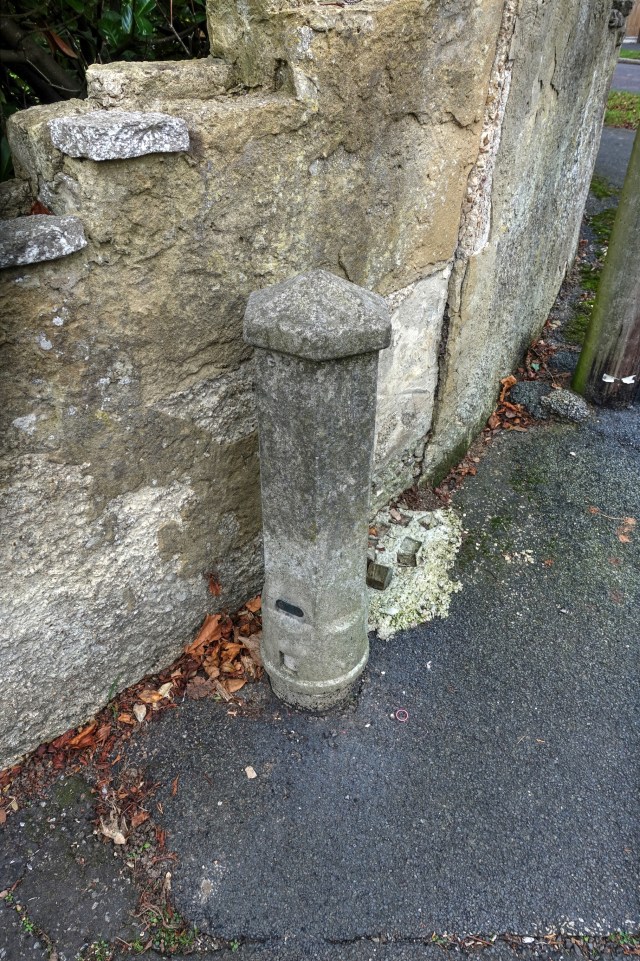In 1945 it was decided that British Post Office distribution networks would consist of main cables terminating in iron cabinets. Local cables were to radiate to small pillars or direct to distribution points (DPs). Pillars would terminate the cable from the cabinet and then local cables would radiate to the DPs.
Post 1970 pillars were no longer installed and only cabinets were used, as the main distribution method.
One such pillar has survived in Gosport. Made with a cover of asbestos concrete, its distinctive shape is easily reconized. Later ones were made of steel.

It’s technical term is a ‘Secondary Connection Point’ (SCP), but better known as a ‘Pillar’.
SCP is secondary to the PCP or ‘Cabinet’. Both are used to enable the distribution of connections between the exchange and the customer.
Inside will be terminations for two sets of cables; the E side and D side or Exchange and Distribution sides. Jumper wires would be used to connect one side to the other.
Once the connections are made the final link in the chain would be to connect the D side cables to homes. This is done at the DP (distribution point) which could be a telephone pole, an underground joint or a terminal block screwed to a wall.
Thanks to Ray Bessant for the technical details.
More information can be viewed here:
https://www.britishtelephones.com/gpo/pillar.htm
Original page created by David Moore.
